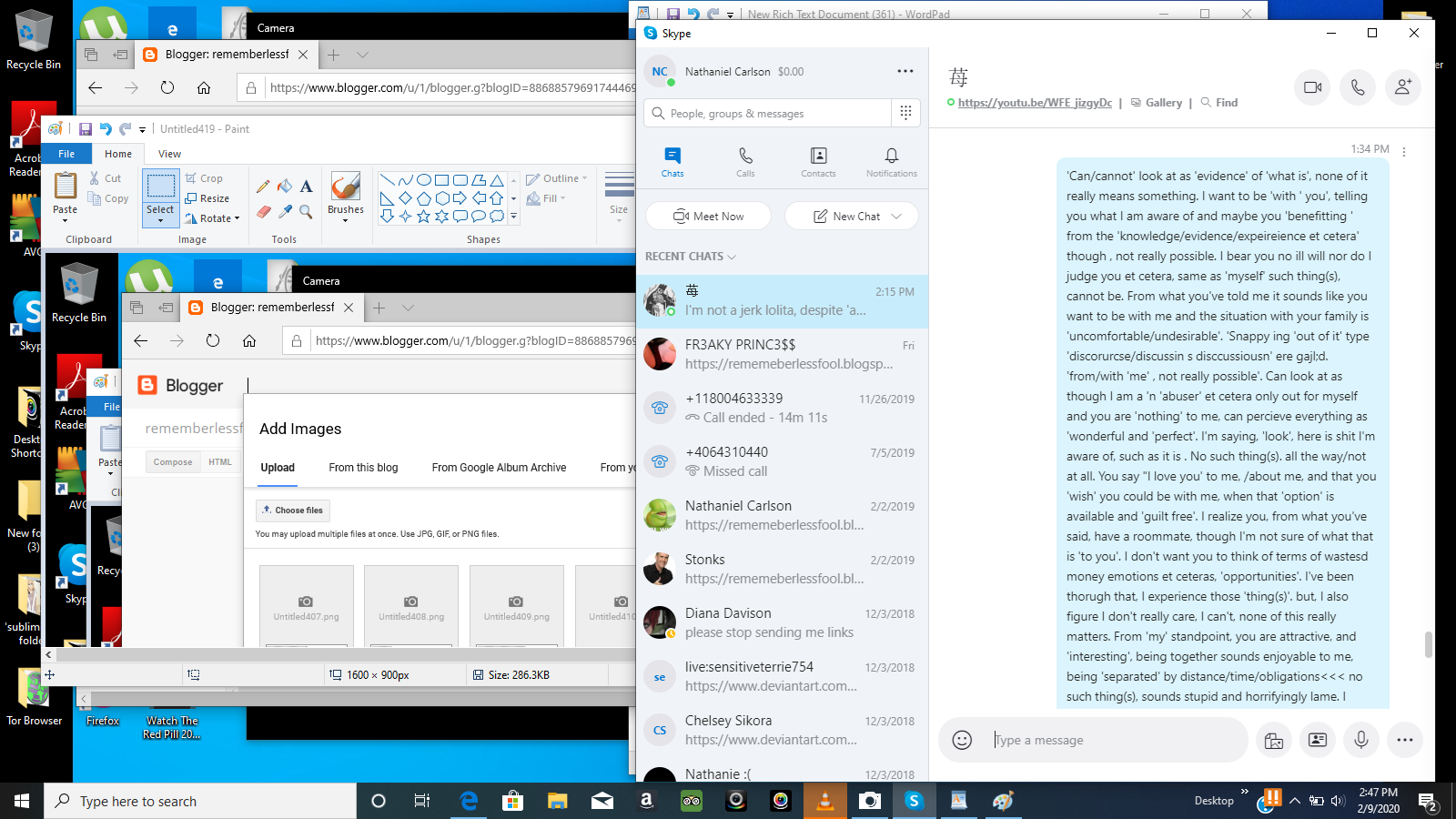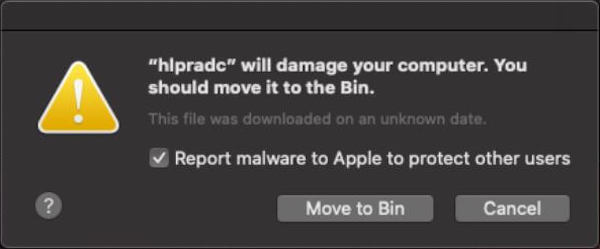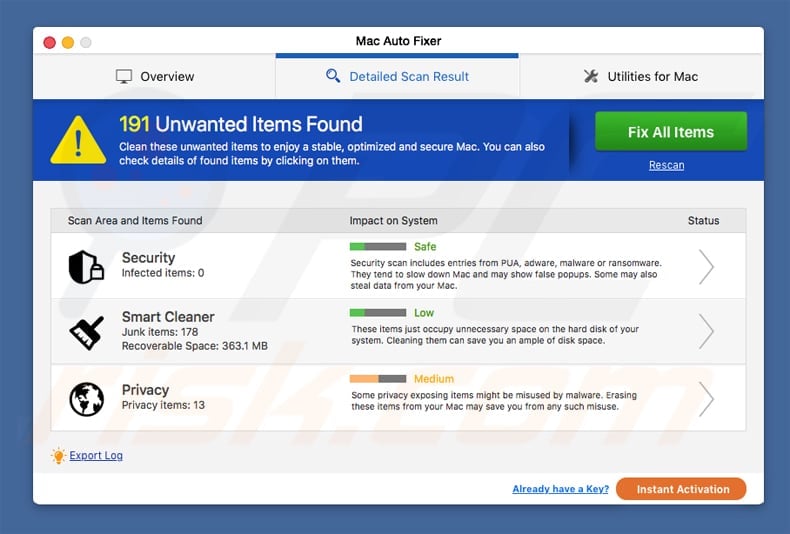As it was mentioned before, most people are fooled by the name, thinking that the Mac Ads Cleaner is a program that can help them manage the online pop up ads. In reality, the app is basically a harmful app whose function and process are quite suspicious. Up until now, there hasn’t any beneficial function or usage of the app.
Pop-ups can be ads, notices, offers, or alerts that open in your current browser window, in a new window, or in another tab. Some pop-ups are third-party ads that use phishing tactics—like warnings or prizes—to trick you into believing they’re from Apple or another trusted company, so you’ll share personal or financial information. Or they might claim to offer free downloads, software updates, or plugins, to try to trick you into installing unwanted software.
Unless you’re confident of an ad’s legitimacy, you should avoid interacting with pop-ups or webpages that seem to take over your screen. Here are additional tips that can help you manage pop-ups and other unwanted interruptions.
Check and update your software
Always make sure you install the latest software updates for all your Apple products. Many software releases have important security updates and may include improvements that help control pop-ups.
- CCleaner has also many other kinds of pop-ups which can appear on the lower right corner. If you want to disable all these pop-ups, here’s how to do it. Step 1: Click the Smart Cleaning tab, and from the right-hand side of Smart Cleaning tab, uncheck Tell me when there are junk files to clean option.
- Ads are the cornerstone of the digital economy. That’s why blocking them becomes more difficult each year. And, sadly, ad blockers cannot eliminate all ads that keep popping up on your screen. In this article, we’ll teach you a few methods of reducing web pop-ups, and we’ll take a look at some of the best Mac ad blocking options.
The safest place to download apps for your Mac is the App Store. If you need third-party software for your Mac, and it isn’t available in the App Store, get it directly from the developer or another reliable source, rather than through an ad or link.
Remove Pop Up Ads Mac
Check Safari settings and security preferences
Make sure Safari security settings are turned on, particularly Block Pop-ups—for pop-up windows—and the Fraudulent Website Warning.
On your iPhone, iPad, or iPod touch, go to Settings > Safari and turn on Block Pop-ups and Fraudulent Website Warning.

On your Mac, you can find these options in Safari > Preferences. The Websites tab includes options to block some or all pop-up windows, and you can turn on fraudulent site warnings in the Security tab. 06 focus air filter.
Pop-ups and ads in Safari
If you see an annoying pop-up ad in Safari, you can go to the Search field and enter a new URL or search term to browse to a new site. If you don’t see the Search field on your iPhone, iPad, or iPod touch, tap the top of the screen to make it appear.
Some pop-ups and ads have fake buttons that resemble the close button, so use caution if you try to close a pop-up or ad. If you're unsure, avoid interacting with the pop-up or ad and close the Safari window or tab.
On your Mac, you can also update your settings to prevent windows from opening again after you close Safari, or just press and hold the Shift key when you open Safari.
If you might have installed adware or other unwanted software on your Mac
If you see pop-ups on your Mac that just won’t go away, you might have inadvertently downloaded and installed adware (advertising-supported software) or other unwanted software. Certain third-party download sites might include programs that you don’t want with the software that you install.

If you think that you might have malware or adware on your Mac, update to the latest version of macOS. If your Mac is already running the latest version, restart it. macOS includes a built-in tool that removes known malware when you restart your Mac.
Check your Applications folder to see if you have any apps that you didn’t expect and uninstall them. You can also check the Extensions tab in Safari preferences to check if you installed any unnecessary extensions that you'd prefer to turn off. If you continue to see advertising or other unwanted programs on your Mac, contact Apple.
Learn more
- How to safely open software on your Mac
- How to recognize and avoid phishing and other scams
How to remove pop-up ads from Mac?
What are pop-up ads?
POP-UP ads (or simply 'pop-ups) are advertisements that usually appear in smaller windows. Typically, they appear in the foreground of a visited website and thus often conceal underlying content. Their presence is due to installed adware or visited websites that use rogue advertising networks. However they are displayed, pop-ups are annoying and cannot be trusted.
What Is Mac Ads Cleaner Pop-up
If clicked, pop-up ads open dubious websites - for example, deceptive web pages that trick people into downloading unwanted applications. These sites often state that the visitor's computer is infected with viruses that must be removed immediately using various potentially unwanted apps (PUAs). Rogue pop-up ads sometimes run scripts that download and install PUAs. To achieve this, however, they must first be clicked. There is a high probability that any downloaded or installed PUAs will be malicious. People are often tricked into clicking these ads when a fake 'close button' is applied to them. Rather than closing the ad, the click performs other unwanted actions. Pop-up ads often appear due to installed adware - software used to generate revenue for developers by feeding regular users with unwanted ads. These PUAs serve users with various pop-ups, banners, coupons, surveys, and so on. If clicked, these ads cause redirects to dubious websites or installation of other unwanted apps. The more ads are displayed, the more adware developers generate revenue. Generally, people download and install adware unintentionally. You are advised to remove all installed advertising-supported software immediately.
| Name | pop-up advertisements |
| Detection Names (Fake Adobe Flash Player updater promoting MyCouponsmart adware) | Avast (MacOS:Agent-EN [Drp]), BitDefender (Adware.MAC.Bundlore.DMM), Emsisoft (Adware.MAC.Bundlore.DMM (B)), Kaspersky (Not-a-virus:HEUR:AdWare.OSX.Bnodlero.q), Full List Of Detections (VirusTotal) |
| Threat Type | Mac malware, Mac virus |
| Symptoms | Your Mac becomes slower than normal, you see unwanted pop-up ads, you are redirected to dubious websites. |
| Distribution methods | Deceptive pop-up ads, free software installers (bundling), fake flash player installers, torrent file downloads. |
| Damage | Internet browser tracking (potential privacy issues), display of unwanted ads, redirects to dubious websites, loss of private information. |
| Malware Removal (Mac) | To eliminate possible malware infections, scan your Mac with legitimate antivirus software. Our security researchers recommend using Combo Cleaner. |
Some examples of apps classified as adware include MyCouponsmart, Top Results, and MatchKnowledge. There are many other apps of this type. They are advertised by offering 'useful' features, tools, and so on, however, when installed, they deploy ads and provide no real value. To avoid redirects to dubious web pages, unwanted installations, or being served with annoying ads, uninstall all adware-type apps immediately.
How did adware install on my computer?
Typically, adware-type apps (and other PUAs) are distributed using deception. Developers bundle them into set-ups of other software. Therefore, they are installed together with other programs. Information about these additionally-included apps is not properly disclosed. Generally, information about bundled apps can be found in download or installation setup settings such as 'Custom', 'Advanced' and other similar parts. Unfortunately, not all people check these settings and thus allow PUAs to be downloaded and installed without their knowledge. In other cases, unwanted apps are installed through deceptive ads that are displayed on dubious web pages. If clicked, they execute scripts that cause unwanted downloads and installations.
How to avoid installation of potentially unwanted applications?
Avoid downloading software from untrustworthy, unofficial websites or using torrent clients, eMule (other Peer-to-Peer networks), and so on. We advise you to use direct download links and official websites. Do not skip download or installation setup steps without checking the 'Custom', 'Advanced' and other similar settings and options. Opt-out of additionally-included/bundled software and only then proceed to the next step or download/installation process. Typically, intrusive ads redirect users to untrustworthy/potentially malicious websites, especially if they are displayed on web pages relating to gambling, pornography, adult dating, and so on. Do not click these ads. If a browser shows advertisements or opens unwanted web pages, check installed applications on the browser (extensions, add-ons, plug-ins) and remove all unknown/unwanted entries immediately. Additionally, if there are any unwanted programs installed on the operating system, they should also be removed. If your computer is already infected with Pop-up ads, we recommend running a scan with Combo Cleaner Antivirus for macOS to automatically eliminate this adware.
Deceptive website promoting Fake Flash Player updater that distributes adware:
Fake Flash Player updater/installer that is used to distribute adware:
Appearance of pop-up ads (GIF):
Instant automatic Mac malware removal:Manual threat removal might be a lengthy and complicated process that requires advanced computer skills. Combo Cleaner is a professional automatic malware removal tool that is recommended to get rid of Mac malware. Download it by clicking the button below:
▼ DOWNLOAD Combo Cleaner for MacBy downloading any software listed on this website you agree to our Privacy Policy and Terms of Use. To use full-featured product, you have to purchase a license for Combo Cleaner. Limited three days free trial available.
Quick menu:
- STEP 1. Remove pop-up ads related files and folders from OSX.
- STEP 2. Remove pop-up ads ads from Safari.
- STEP 3. Remove pop-up ads adware from Google Chrome.
- STEP 4. Remove pop-up ads ads from Mozilla Firefox.
Video showing how to remove pop-up ads and unwanted applications using Combo Cleaner:
Adware removal:
Remove Pop-up ads-related potentially unwanted applications from your 'Applications' folder:
Click the Finder icon. In the Finder window, select 'Applications'. In the applications folder, look for 'MPlayerX', 'NicePlayer', or other suspicious applications and drag them to the Trash. After removing the potentially unwanted application(s) that cause online ads, scan your Mac for any remaining unwanted components.
Combo Cleaner checks if your computer is infected with malware. To use full-featured product, you have to purchase a license for Combo Cleaner. Limited three days free trial available.
Remove pop-up advertisements related files and folders:
Click the Finder icon, from the menu bar. Choose Go, and click Go to Folder..
Check for adware-generated files in the /Library/LaunchAgents folder:
In the Go to Folder.. bar, type: /Library/LaunchAgents
In the “LaunchAgents” folder, look for any recently-added suspicious files and move them to the Trash. Examples of files generated by adware - “installmac.AppRemoval.plist”, “myppes.download.plist”, “mykotlerino.ltvbit.plist”, “kuklorest.update.plist”, etc. Adware commonly installs several files with the same string.
Check for adware generated files in the /Library/Application Support folder:
In the Go to Folder.. bar, type: /Library/Application Support
In the “Application Support” folder, look for any recently-added suspicious folders. Insert code snippet into word document. For example, “MplayerX” or “NicePlayer”, and move these folders to the Trash.
Check for adware-generated files in the ~/Library/LaunchAgents folder:
In the Go to Folder bar, type: ~/Library/LaunchAgents
In the “LaunchAgents” folder, look for any recently-added suspicious files and move them to the Trash. Examples of files generated by adware - “installmac.AppRemoval.plist”, “myppes.download.plist”, “mykotlerino.ltvbit.plist”, “kuklorest.update.plist”, etc. Adware commonly installs several files with the same string.
Check for adware-generated files in the /Library/LaunchDaemons folder:
In the Go to Folder.. bar, type: /Library/LaunchDaemons
In the “LaunchDaemons” folder, look for recently-added suspicious files. For example “com.aoudad.net-preferences.plist”, “com.myppes.net-preferences.plist”, 'com.kuklorest.net-preferences.plist”, “com.avickUpd.plist”, etc., and move them to the Trash.
Scan your Mac with Combo Cleaner:
If you have followed all the steps in the correct order you Mac should be clean of infections. To be sure your system is not infected run a scan with Combo Cleaner Antivirus. Download it HERE. After downloading the file double click combocleaner.dmg installer, in the opened window drag and drop Combo Cleaner icon on top of the Applications icon. Now open your launchpad and click on the Combo Cleaner icon. Wait until Combo Cleaner updates it's virus definition database and click 'Start Combo Scan' button.
Combo Cleaner will scan your Mac for malware infections. If the antivirus scan displays 'no threats found' - this means that you can continue with the removal guide, otherwise it's recommended to remove any found infections before continuing.
After removing files and folders generated by the adware, continue to remove rogue extensions from your Internet browsers.
pop-up advertisements removal from Internet browsers:
Remove malicious extensions from Safari:
Remove pop-up advertisements related Safari extensions:
Open Safari browser, from the menu bar, select 'Safari' and click 'Preferences..'.
In the preferences window, select 'Extensions' and look for any recently-installed suspicious extensions. When located, click the 'Uninstall' button next to it/them. Note that you can safely uninstall all extensions from your Safari browser - none are crucial for normal browser operation.
- If you continue to have problems with browser redirects and unwanted advertisements - Reset Safari.
Remove malicious plug-ins from Mozilla Firefox:

Remove pop-up advertisements related Mozilla Firefox add-ons:
Open your Mozilla Firefox browser. At the top right corner of the screen, click the 'Open Menu' (three horizontal lines) button. From the opened menu, choose 'Add-ons'.
Choose the 'Extensions' tab and look for any recently-installed suspicious add-ons. When located, click the 'Remove' button next to it/them. Note that you can safely uninstall all extensions from your Mozilla Firefox browser - none are crucial for normal browser operation.
- If you continue to have problems with browser redirects and unwanted advertisements - Reset Mozilla Firefox.
Remove malicious extensions from Google Chrome:
Remove pop-up advertisements related Google Chrome add-ons:
Open Google Chrome and click the 'Chrome menu' (three horizontal lines) button located in the top-right corner of the browser window. From the drop-down menu, choose 'More Tools' and select 'Extensions'.
Remove Mac Ads Cleaner Pop-up
In the 'Extensions' window, look for any recently-installed suspicious add-ons. When located, click the 'Trash' button next to it/them. Note that you can safely uninstall all extensions from your Google Chrome browser - none are crucial for normal browser operation.
Mac Ads Cleaner Pop-up How To Remove
- If you continue to have problems with browser redirects and unwanted advertisements - Reset Google Chrome.